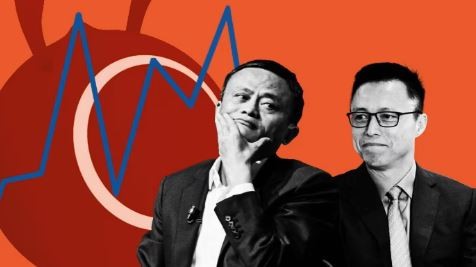The Challenges and Growth Opportunities of Ant Group in the Financial Industry

When the Chinese government canceled Ant Group’s IPO plans in 2020 to rein in its financial empire, the future of Jack Ma’s lending and payment business was uncertain. Four years later, Ma relinquished control of Ant after Beijing ordered a restructuring of Alibaba’s financial technology subsidiary, along with a $984 million fine. Ant’s value plummeted by around 40% compared to the proposed IPO price.
However, after years of stagnation, Ant has begun expanding globally and ramping up its international payment operations in search of post-Ma growth opportunities.
“Ant could attempt to expand its financial business operations once again,” says Tilly Zhang, an analyst at Gavekal Dragonomics. “Given the opportunity, it is understandable that Ant would seize it.”
According to Deloitte, Ant is now operating in a very different landscape from 2020 when 35 Chinese companies raised $13.8 billion through initial public offerings (IPOs) in the US. At that time, Ant was believed to revolutionize mainland China’s banking industry, partly due to the boost in online sales volume at its parent company, Alibaba.
Since then, US-China political relations have become tense, prompting the Chinese government to crack down on tech companies with the aim of breaking up the “monopolistic” positions held by internet platforms.
Alibaba, no longer the most valuable e-commerce company in China, has restructured its business operations to keep up with competitors like Pinduoduo. Ant and its subsidiaries have also faced tighter financial regulations.
“Everything has changed significantly. In the future, internet finance service platforms, including Ant, will only be part of the broader financial and banking industry,” says Zerlina Zeng, a senior credit analyst at CreditSights, noting that Ant’s expansion into traditional financial services has been restricted.
According to Ant’s 2020 data, the majority of its revenue of ¥72.5 billion in the first half of the year came from fintech business operations, primarily online consumer lending. However, due to stricter regulations, this activity has experienced a sharp decline in profitability.
Alipay, a popular payment app in China, which used to contribute significantly to Ant’s revenue in 2020, remains part of the conglomerate.
Ant has not disclosed its financial data, but it is known that the company’s annual profit fell by over half to ¥30.9 billion in 2022 after regulatory crackdowns, according to Financial Times calculations based on Alibaba’s income reports. More recently, Ant’s Q3 2023 profit dropped over 90% compared to the same period, down to ¥240 million. To pursue growth, Ant has shifted its focus to international payment services, which accounted for less than 1% of Alipay’s payment volume in China four years ago.
Eric Jing, who was appointed as Ant’s CEO for the second time in 2021, has participated in programs aimed at promoting the company. On March 19, he approved a restructuring plan for its foreign payment operations, allowing it to operate independently.
A month earlier, Eric Jing attended an event hosted by the People’s Bank of China in Beijing, discussing digital payment services for foreign tourists visiting the mainland. This event demonstrated Ant’s efforts to collaborate with the government.
“When entering a new market, the goal is not to make quick profits. For us, the most important thing is always to fulfill long-term commitments and contribute sustainably to the local economy,” says Eric Jing.
Ant recently announced that its payment network now connects over 88 million merchants and has 1.5 billion consumer accounts across more than 25 applications in 57 countries and regions. Liu Meng, an analyst at consulting firm Forrester, says, “Global expansion is Ant’s top priority this year and the only driving force for future profit growth. Ant and other Chinese competitors need to deliver better products to gain market share.”
However, concerns persist about the direction of Ant without Jack Ma. While his departure helped ease tensions with Beijing, it may also hinder Ant’s clear vision. Dong Ximiao, a senior researcher at Merchants Union Consumer Finance, says, “Ant’s corporate governance is now more balanced and optimized, but of course, there are still a few shortcomings.”
Familiar sources indicate that Ant’s formerly highly profitable consumer lending business has declined by almost half. Leverage limits imposed in 2021 have reduced the scale and profitability of the company.
Typically, Ant earns profits by attracting young customers to borrow online from small banks. However, these banks are still obliged by regulators to limit their exposure to Ant and other online platforms.
“It’s hard to shake Ant’s position as a payment service, but it’s also challenging to predict the company’s position given the Chinese financial context. Ant can no longer grow as fast as before; that’s for sure,” says Dong Ximiao.
This article was written for Business Today.
